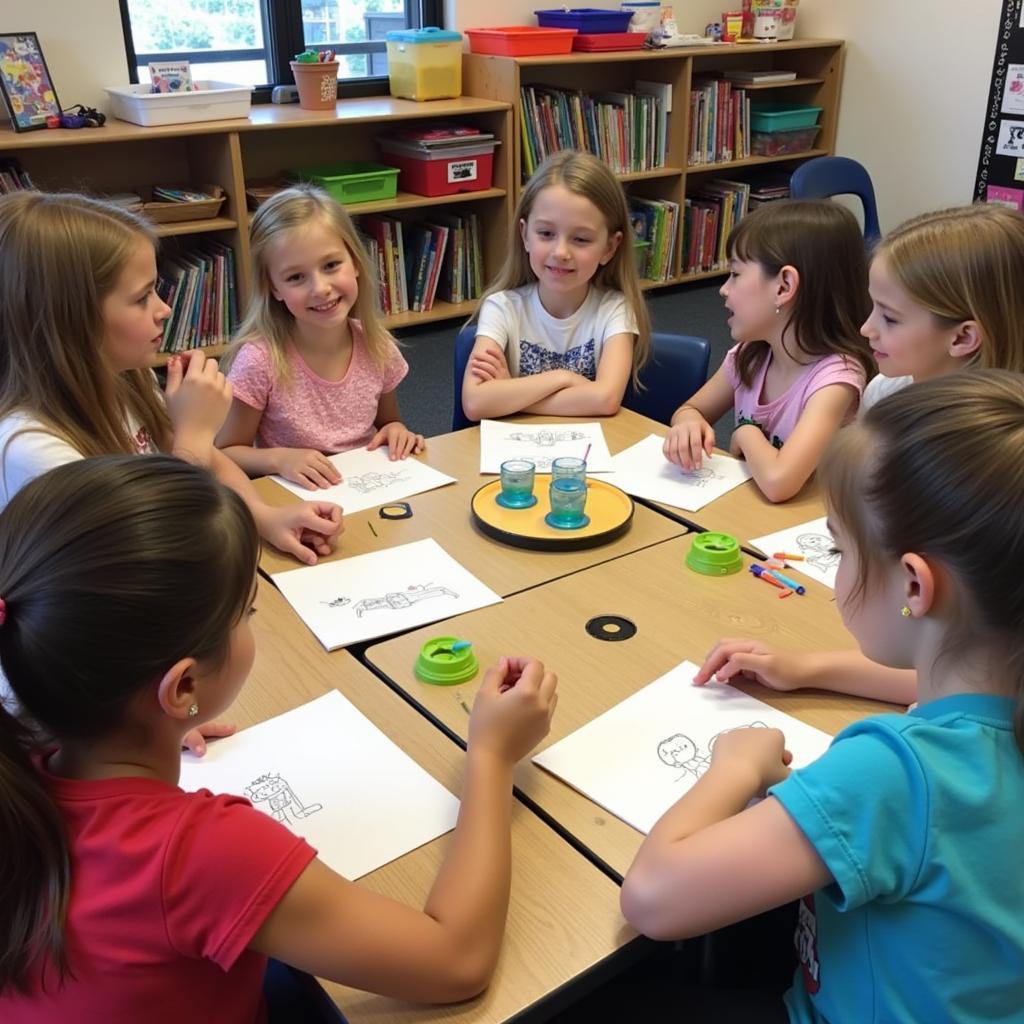“Bend the tree from when it is young, teach the child from when they are small.” Teaching preschool children to read poetry is not just about conveying words, but also about planting the seeds of love for language, sparking emotions, and developing rich imaginations in children. So, how can we teach children to read poetry effectively and with enthusiasm? Preschool lesson plans for provincial excellent teacher contests provide many helpful methods for teachers.
I vividly remember little Minh, a shy boy in my class years ago. Minh was quiet, hesitant to communicate, and poetry seemed like a distant world to him. But then, through short poems and stories told in verse, Minh gradually opened up, stammering along, his eyes sparkling with joy. That was the motivation for me to continue the journey of sowing the seeds of poetry in young hearts.
Exploring the World of Poetry with Preschoolers
Teaching preschoolers to read poetry should start with short, easy-to-understand poems that are close to children’s daily lives. Cheerful melodies and rhymes, and vivid imagery will help children easily grasp and remember. Select poems with positive content suitable for their age, avoiding poems with negative or violent themes.
Choosing Appropriate Poems
Ms. Nguyen Thi Lan, a leading early childhood education expert in Vietnam, emphasized in her book “Sowing Seeds of Poetry for Children”: “Choosing poems that are appropriate for children’s age and psychology is extremely important. The poem needs to be concise, easy to understand, with vivid images, cheerful melodies, and close to children’s lives.”
Effective Methods for Teaching Children to Read Poetry
Reading poems aloud to children is the first and most important step. A teacher’s expressive and emotional voice will help children feel the rhythm and melody of the poem. Encourage children to read along, mimicking the teacher’s tone. Organize poetry reading activities in groups or pairs, and have children role-play characters in the poem to increase interaction and interest. Concise and best preschool lesson plans will be an excellent resource for teachers.
Turning Poetry Learning into Play
Learning poetry becomes more enjoyable when integrated into games. For example, games like “rhyme word search,” “matching pictures with poem lines,” “poetry drama,” etc., will help children memorize poems naturally and enthusiastically. As the saying goes, “learn through play, play while learning,” which is absolutely true!
 Enthusiastic children participate in a creative poetry reading game in a preschool classroom.
Enthusiastic children participate in a creative poetry reading game in a preschool classroom.
Creating a Friendly Learning Environment
A friendly and welcoming learning environment will help children feel more comfortable and confident when reading poetry. Decorate the classroom with vivid illustrations and beautiful poem verses. Create opportunities for children to present poems in front of the class and their friends.
Conclusion
Teaching preschoolers to read poetry is a long journey that requires patience and love from the teacher. Let poetry nurture children’s souls, helping them develop comprehensively in language, emotions, and intellect. Pedagogical skills of preschool teachers are crucial for teachers to perform this task well. Please contact Phone Number: 0372999999, or visit address: 234 Hao Nam, Hanoi. We have a 24/7 customer care team.
Share your experiences in teaching children to read poetry in the comments below. You can also refer to electronic lesson plans for 4-year-old preschoolers or the speech of the preschool principal on November 20th on our website.